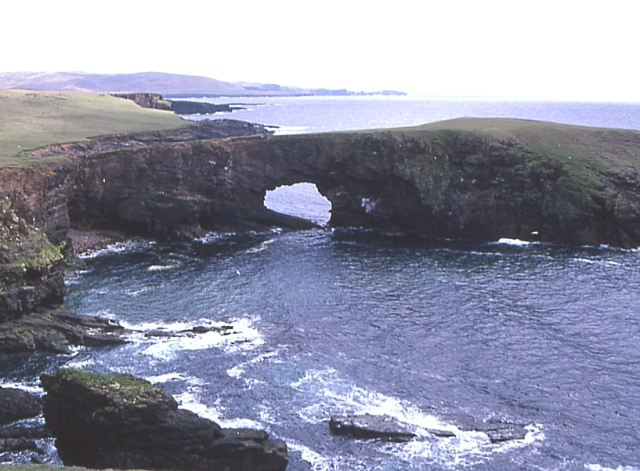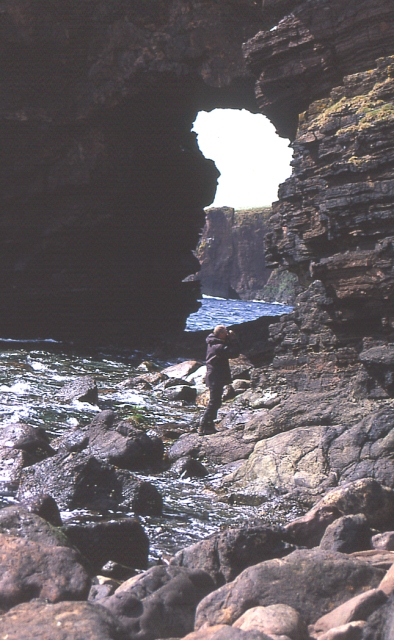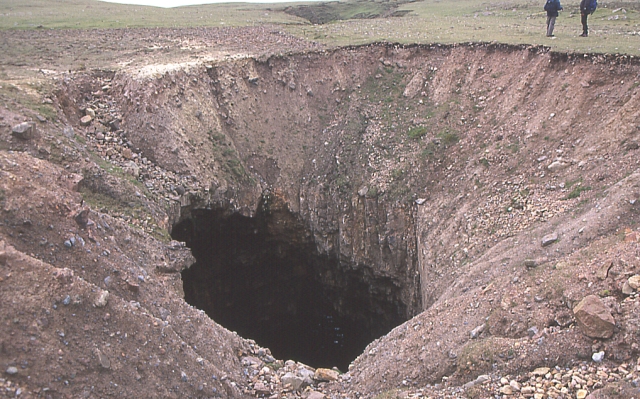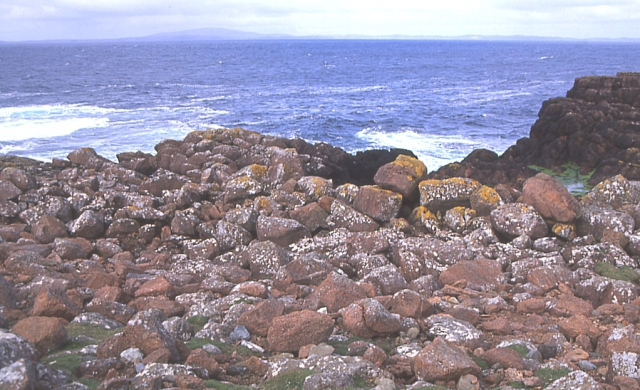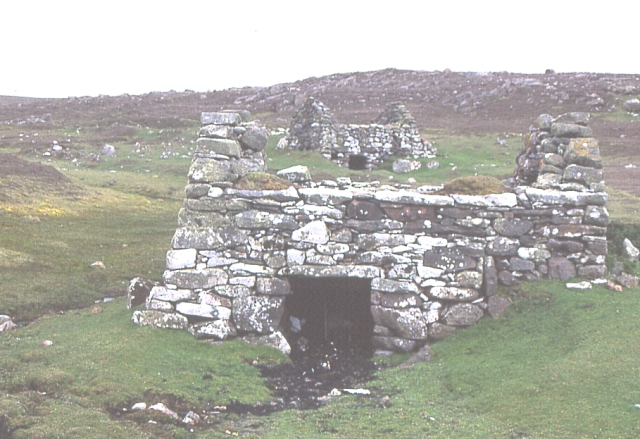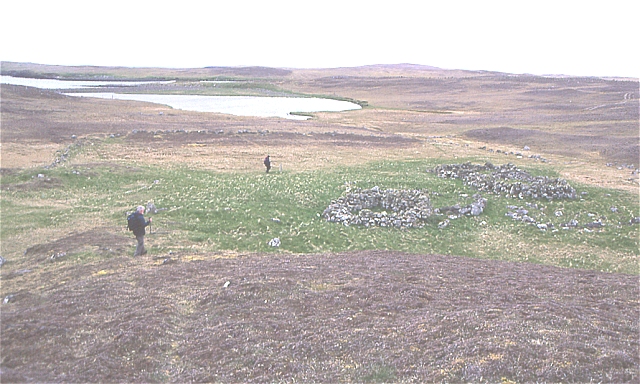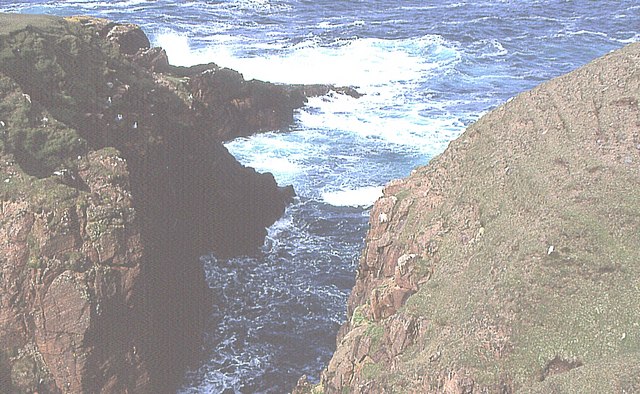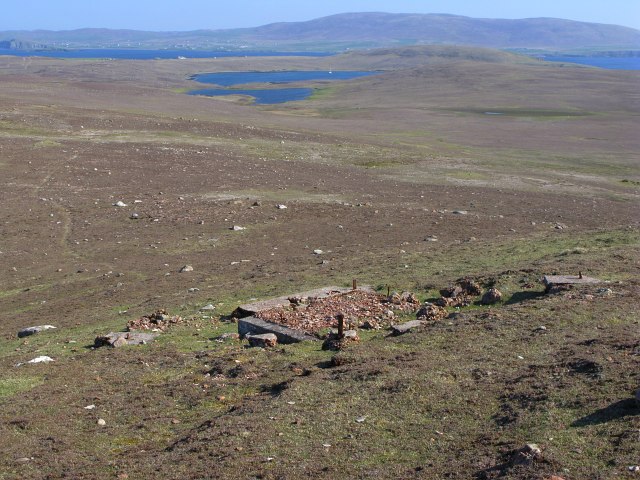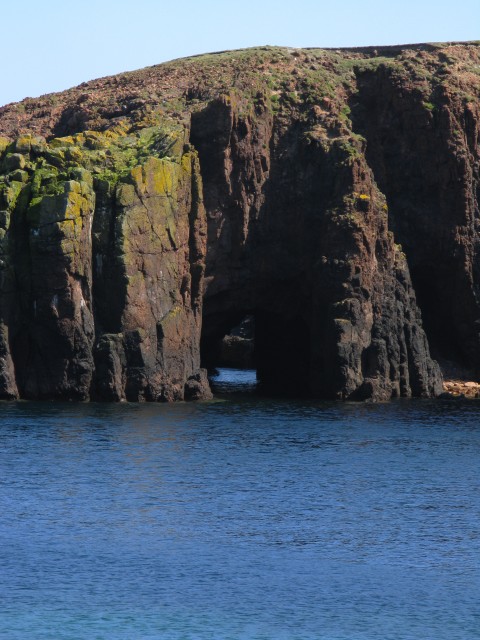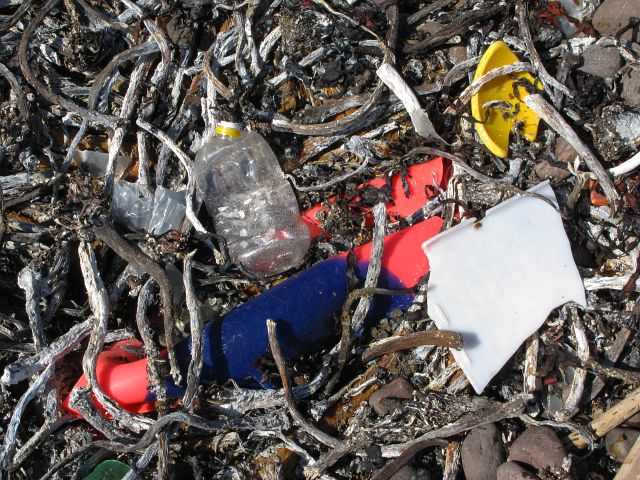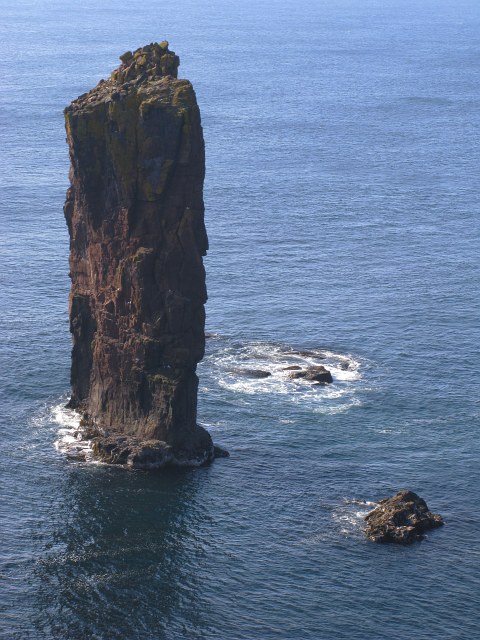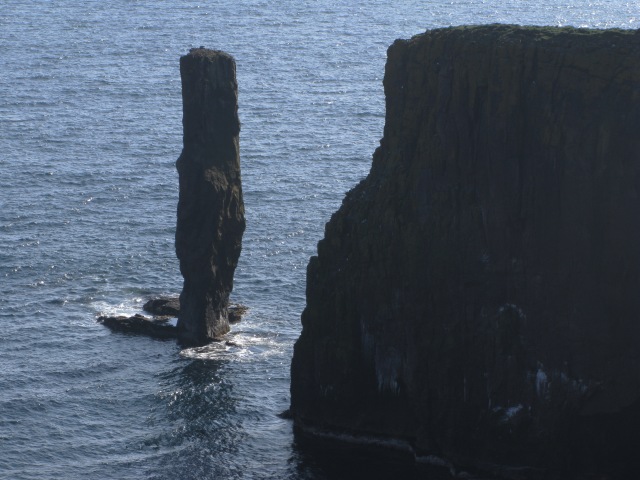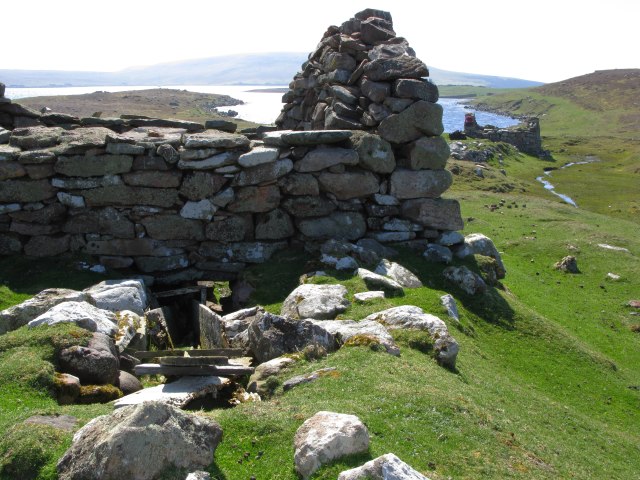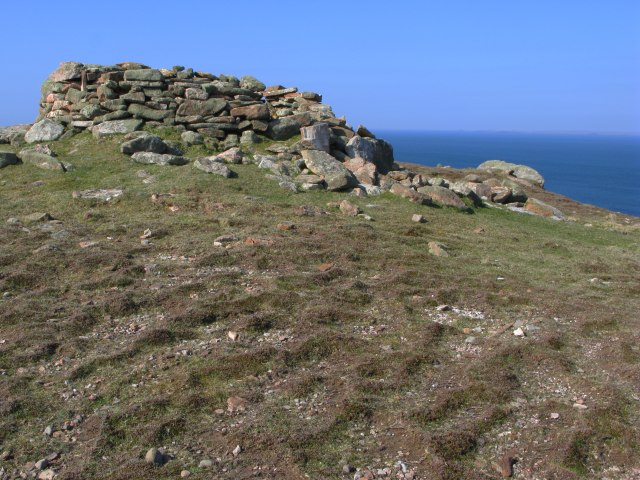Redbeard
Coastal Feature, Headland, Point in Shetland
Scotland
Redbeard
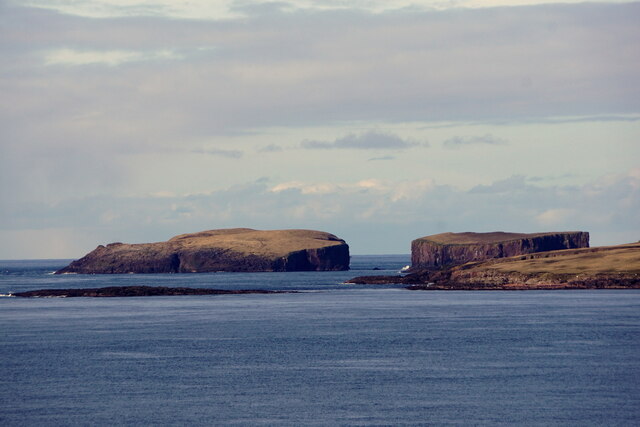
Redbeard is a prominent coastal feature located in the Shetland Islands, which are situated off the northeastern coast of Scotland. Specifically, Redbeard is a headland or point that juts out into the vast expanse of the North Sea. It is positioned on the western side of the Shetland Mainland, the largest island in the archipelago.
The name "Redbeard" is derived from the appearance of the headland's cliffs, which exhibit a reddish hue due to the presence of iron-oxide minerals. These cliffs are characterized by their steepness, rising dramatically from the sea and reaching heights of approximately 100 meters (330 feet) in some areas. The rugged nature of the terrain attracts numerous seabird species, including puffins, guillemots, and razorbills, which nest in crevices along the cliffs.
Redbeard offers breathtaking panoramic views of the surrounding coastline and the vast North Sea. On clear days, visitors can see the distant Shetland Islands, as well as the nearby headlands and cliffs that line the coastline. The headland also serves as an excellent vantage point for observing marine wildlife, such as seals and dolphins, which are often spotted swimming in the waters below.
Access to Redbeard is relatively easy, with a well-maintained footpath leading from a nearby car park to the headland. The footpath allows visitors to explore the area safely while taking in the stunning natural beauty of the Shetland Islands. Redbeard is a popular destination for nature enthusiasts, hikers, and photographers, offering a unique and unforgettable experience of Scotland's coastal landscapes.
If you have any feedback on the listing, please let us know in the comments section below.
Redbeard Images
Images are sourced within 2km of 60.3441/-1.7217036 or Grid Reference HU1562. Thanks to Geograph Open Source API. All images are credited.
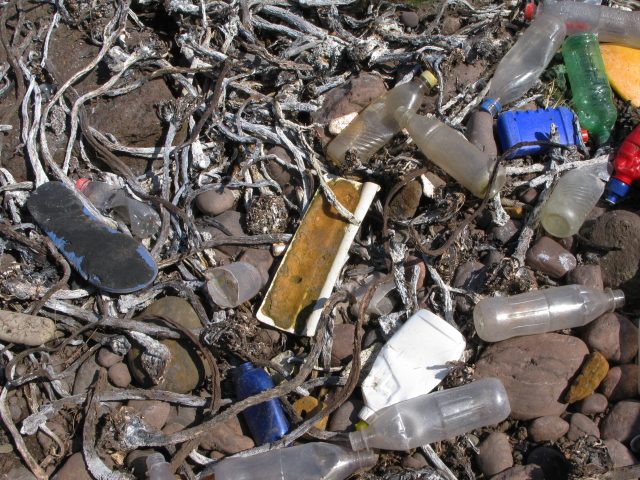
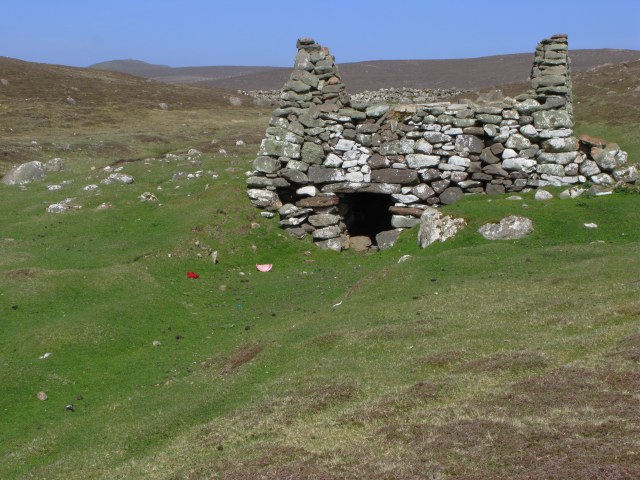

Redbeard is located at Grid Ref: HU1562 (Lat: 60.3441, Lng: -1.7217036)
Unitary Authority: Shetland Islands
Police Authority: Highlands and Islands
What 3 Words
///grub.initiates.handover. Near Walls, Shetland Islands
Nearby Locations
Related Wikis
Papa Stour
Papa Stour (Scots: Papa Stour) is one of the Shetland Islands in Scotland, with a population of under fifteen people, some of whom immigrated after an...
Biggings
Biggings is a village on the island of Papa Stour, in Shetland, Scotland. Papa Stour's church is situated at the south of Biggings. A homestead of Duke...
Papa Stour Airstrip
Papa Stour Airstrip is a small airstrip in the village of Biggings on the island of Papa Stour. Shetland, Scotland. == History == Papa Stour Airstrip opened...
Maiden Stack
The Maiden Stack or Frau Stack is a tiny stack in the western Shetland Islands to the north of Brei Holm and east of Housa Voe in Papa Stour. It is so...
Have you been to Redbeard?
Leave your review of Redbeard below (or comments, questions and feedback).
